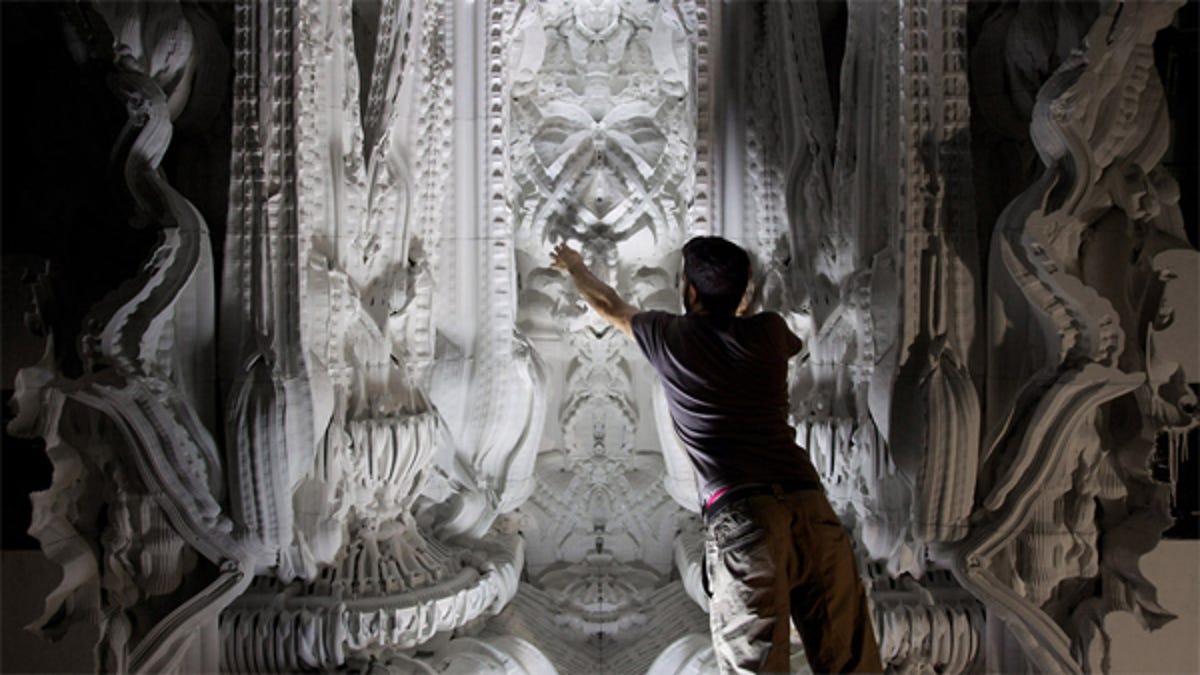Gorgeous baroque 3D-printed room designed by computers
Digital Grotesque aims to defy architectural conventions with an elaborate, 3D-printed grotto designed almost entirely by algorithms.

(Credit: Digital Grotesque)
Digital Grotesque aims to defy architectural conventions with an elaborate, 3D-printed grotto designed almost entirely by algorithms.
A 3D-printed house is yet to be realised, but Swiss architects Michael Hansmeyer and Benjamin Dillenburger at this point are doing something a little more on the conceptual side. In a project titled Digital Grotesque, they have engaged in what they're calling "computational architecture" by programming algorithms that can design deeply elaborate structures.
The resultant grotto contains more than 260 million surfaces, generated with 3D modelling software in a process inspired by cell division.
"At a basic level, the algorithm used to generate the Digital Grotesque room functions by gradually refining and enriching a simple input form. The surfaces of a form are divided into smaller surfaces, and these in turn are divided again and again. Changes to one surface propagate down to its children. By altering the division ratios, one can control the geometry of the form," reads the Digital Grotesque website.
"Using this simple process, one can create astoundingly complex geometries with only a few subdivision steps. By changing the division ratios, one can also generate a surprising variety of forms. The process remains entirely the same; only the division parameters are altered."
The basic shape of the room was input by the two architects and the algorithms left to their work. The resulting design was then 3D printed in pieces of sandstone with a layer resolution of 0.13 millimetres — a much more durable material than the more common plastics — by Swiss industrial 3D printing company Voxeljet AG. The process, all up, took around 13 months.
The grotto itself measures 16 square metres — at 3.2 metres in height — and contains 11 tonnes of printed sandstone.
"As a fictive narrative space, the Digital Grotesque project is less concerned with functionality than with the expressive formal potentials of digital technologies," the pair said. "It examines new spatial experiences and sensations that these technologies enable. As such, Digital Grotesque is a lavish, exhilarating space, full of details at the threshold of perception, waiting to be discovered and spurring one's imagination of what is yet to be created."

